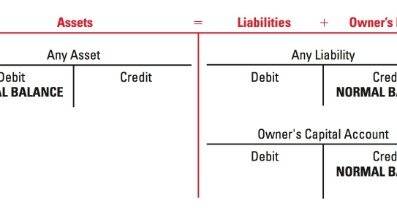Blockchain Technology and the Future of Accounting and Auditing Services SpringerLink

In future, accountants may need to provide professional judgements during the accounting process (McGuigan and Ghio, 2019; Dai and Vasarhelyi, 2017). Moreover, with an increase in the number of cryptoassets and initial coin offerings (ICOs) accountants may also need to develop their skills as advisors and consultants on how to report these kinds of assets and transactions. Further, if blockchain is implemented on a broad scale, accountants will not only have more information for planning and control, they may be required to synthesise it. This, too, will change the role of accountants, particularly management accountants. No longer relegated to the back office, accountants would likely take a much more prominent position as agents of intelligence, advising, communicating and attempting to closely link their firm’s activities to strategic decision-making.

Furthermore, governments are typically reluctant to fully embrace financial and monetary changes that they can exert little control over. The adoption of blockchain technology along with artificial intelligence technologies and, more specifically, machine learning is happening at a fast rate. For example, blockchain technology will record that you bought something with 1 bitcoin. However, accountants can’t see whether it’s a car or even that you categorized your assets correctly.
Artificial Intelligence in Accounting – All You Need to Know
We chose PRISMA over other existing protocols because of its comprehensiveness, its use in several disciplines worldwide and its potential to increase consistency across reviews (Liberati et al., 2009; Pahlevan-Sharif et al., 2019). Cons
Accountancy practitioners routinely make adjustments to financial records. This includes integrating data from a prior period as those data become available (accounting for subsequent events or adjusting for under/over applied overhead are examples).
Furthermore, major complementarities emerge between blockchain and RFID (van Hoek, 2019), IoT and ERP (Kayikci et al., 2022). First, this SLR provides a clear picture of the state of accounting research on blockchain. The engagement of academics and practitioners with the potential of blockchain and technological advancements is growing but limited (Schmitz and Leoni, 2019).
Customized transaction protocols
Essential roles for auditors in the future will be assuring the reliability, credibility and authorisation process of blockchain transactions. Blockchains do not provide a guarantee for transactions taking place in the real world. Even if they are recorded onto blockchains, transactions may still be fraudulent, illegal or unauthorised. Hence, given the need for auditors to detect and investigate transaction errors or fraud, the argument of auditors becoming obsolescent is not evident.
Unless existing processes and systems are truly scrutinised for their potential to benefit from blockchain technology, the full range of opportunities that blockchain presents will not be realised. Blockchain will only become a “game-changer” if all parties involved in the accounting ecosystem are open to its potential. The results showed that the four topics with the highest marginal distribution accounted for more than half of the overall content of the sample. To test the validity and reliability receivable turnover ratio of this result, we applied several other types of analysis suggested by researchers working with literature reviews. For example, Dumay and Cai (2014) and Jones and Alam (2019) argue that citation impact factors are increasingly important because they identify the most influential articles. Highly cited articles represent a “corpus of scholarly literature” that can help “develop insights, critical reflections, future research paths and research questions” (Massaro et al., 2016, p. 767).
More Resources on Small Business Accounting
Accounting information may be verified by different actors thanks to the assurance abilities of blockchain and because companies can continuously share information. Moreover, there is the possibility to automate some external auditing functions over the blockchain to improve audit quality and narrow the expectation gap between auditors, financial statement users and regulatory bodies (Rozario and Vasarhelyi, 2018). Some authors call for the appearance of a new brand of auditor that can offer attestation services for independent evaluations of blockchain controls (Canelón et al., 2019; Sheldon, 2019).
- Gonzalez (2020) shows that peer-to-peer (P2P) lending decisions are influenced by the gender of borrowers and herding behavior.
- Immutability is a desirable feature for accounting systems because it prevents manipulation, but the way that blockchain achieves this goal is subject to criticism.
- It also saves businesses a lot of time from having to deal with fraud or trying to collect money from dishonest organizations.
- Instead, successful accountants will be those that work on assessing the real economic interpretation of blockchain records, marrying the record to economic reality and valuation.
- Both blocks and the records contained within them are linked through timestamps.
Think of a token as a digital version of a vehicle that is used to record and track transactions from the ERP system to the blockchain accounts and ledger; the same process is undertaken for each transaction. A smart contract can be encoded with an obligation token to execute a payment once certain conditions are met (e.g., the payment due date has been reached). The continued expectation and requirement of a broader-based approach for organizational reporting does not appear to be neither a passing fad nor a temporary phenomenon.
Blockchain Explained and Implications for Accountancy
The second risk is transaction malleability, which occurs when an attacker copies a transaction and modifies it to receive tokens (payment) then claims that no tokens were ever received. The third risk relates to flawed smart contracts that can hide malicious code or another contract with a weakness. This risk highlights the need for independent external auditors to approve transactions before the contract enters the blockchain. In short, the ability of blockchain to store records makes it a target for potential cyberattacks. Therefore, to ensure the security of information in a blockchain, there is a need to implement internal and cybersecurity controls that consider privacy preservation issues (Chohan, 2017; Coyne and McMickle, 2017; O’Leary, 2017).
